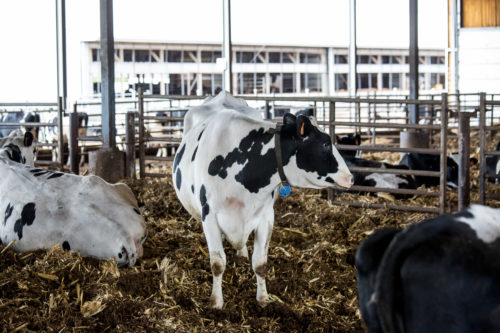The Role of Calcium in Transition Cows
Posted: September 27, 2019 | Written By: Dayane Da Silva, Ph.D. - Form-A-Feed Nutritionist

You need to get your cows off and running at optimum speed early in lactation for the best return of investment and high profits. The transition period (21 days before and 21 after calving) has a huge impact on overall lactation production. For instance, peak milk is an excellent way to monitor transition period management and can translate to higher milk yield for the entire lactation. An analysis done at dairies in Utah revealed that one extra pound of milk at peak is equal to approximately 239 to 273 pounds of Actual 305 milk over a lactation. This means if cows increase the level of peak milk by ONE pound it would mean 273 – 239 additional pounds of milk per cow over a lactation (Allen Young, Utah State University).
At $18/cwt milk that is an additional $43,020 – $49,140 extra for a 1000-cow herd.
Despite all the buzz and what we have learned over the last decade about the importance of the transition period, research shows that more than 50% of multiparous cows after calving have blood calcium concentrations below the desirable threshold leading to hypocalcemia or milk fever. Milk fever is a metabolic disease that most commonly occurs at calving and onset of lactation and is associated with huge economic losses. Milk fever poses a threat on overall cows’ performance, taking away the chance of cows having higher peak milk, and hurting their opportunity to reach a full lactation potential.
Calcium is the most abundant mineral in the body and plays a role as a component of milk. It is essential for muscle contraction, blood clotting, skeletal tissue, and transmission of nervous tissue impulses. Inadequate calcium balance earlier in lactation results in other metabolic diseases and loss of milk that cannot be gained back later.
Calcium blood concentration starts declining around parturition with more severe drops on second and greater lactation cows, reaching the lowest levels around 12 – 24 hours after calving. New cut-point for total serum calcium is about 8.5 mg/dl with levels lower than that has been linked with a variety of health problems in early lactating cows.
Facts about Calcium Metabolism in earlier lactation:
- Reach the lowest levels around 12 – 24 hours after calving.
- Total serum calcium lower than 8.5mg/dl has been linked with metabolic disorders.
- Low calcium is linked to lower probability of pregnancy at the first AI.
Dietary cation-anion (DCAD) difference has been defined as milliequivalents of (Na + K) – (Cl + S) per kg of DM and is one of the most researched topics in dairy nutrition. Low DCAD on prepartum can lessen hypocalcemia peripartum via increased urinary calcium, blood-ionized calcium, and responsiveness to calcium homeostatic hormones. Reduced DCAD in close-up diets has been associated to reduce milk fever and reduce economical losses which include loss of milk, veterinary cost, labor cost, and possibly a dead cow.
Form-A-Feed ANION 5000 fed at the rate of 0.5 to 1 lb per head daily has enabled our nutritionists to formulate diets with a lower DCAD prior to calving, helping to lower blood pH and alleviating metabolic disorders at calving. ANION 5000 assists cows during the transition period, leading to fewer metabolic disease after freshening and a more profitable lactation.
Performance metrics and benchmarks (see chart 1) should also be closely monitored to help your farm to make decisions and achieve performance goals. Feeding management strategies, cow comfort, and avoiding excessive amounts of weight loss and drops in Body Score Condition earlier in lactation are key areas that will impact cow performance and dictate a profitable lactation.
| CHART 1 Benchmark health disorders* | |
| Disorders | Benchmark |
| Displaced abomasum (DA) | < 3% |
| Clinical milk fever | < 2% |
| Retained placenta (RP) | < 8% |
| Hyperketonemia (BHB ≥ 1.2 mmmol/L) | < 15 to 20% |
| Fresh-cow mastitis prevalence (multiparous) | < 10 % |
| Fresh-cow mastitis prevalence (primiparous) | < 7 % |
| *Cornell University |